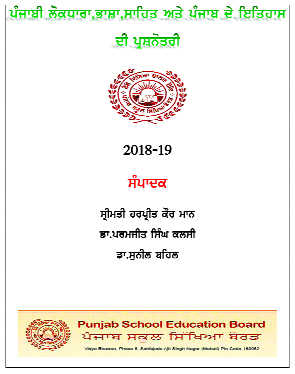PSEB e-book offers new lease of life to folk culture
Sanjeev Singh Bariana
Tribune News Service
Chandigarh, July 26
In a bid to connect the youth with Punjabi tradition and folk culture, the Punjab School Education Board (PSEB) has come out with a 342-page e-book “Lokdhara, Bhasha, Sahit atte Itihaas” (folklore, languages, literature and history). It is in question-answer form (5,000 of them), the script can be accessed on the board website (pseb.ac.in).
Talking to The Tribune, Manjit Kaur, Director Academic, PSEB, said: “We were asked by the Prime Minister’s office to supply a list of as many as 500 words associated with the culture and tradition of Punjab. After we sent the list, our team decided to put in a little extra effort. We thought it would be prudent to put the prepared text on our website which could be accessed by all.”
Manjit Kaur said: “The compilation was carried out by Harpreet Kaur Mann, Dr Paramjit Singh Kalsi and Dr Sunil Sahil. We have sought reaction from readers, in case more additions or improvements can be made.”
Appreciating the effort, a former president of the Punjab Sahit Akademi (Ludhiana), Prof Gurbhajan Gill, said: “Many words of Punjabi are being forgotten like ‘hal’ (traditional plough), ‘paraga’ (barter) and ‘ajoka’ (contemporary). We need to nurture this treasure for our future generations.”
Dr Amandeep Singh, a teacher of Governemnt High School, Hoshiarpur, said: “The effort is appreciable. The content can be edited for a better copy. Like while one part contains multiple choice questions, a majority of the text is in straight question and answer format.”
In the book, youngsters can read about people in the past going to ‘Chappar mela’ in Ludhiana district (associated with serpents), ‘teean’ (monsoon) and mela for peer faqirs in Jagraon. Readers can have a quick look of a section on idioms, history and most importantly commonly used words which are losing sheen.
One can also read about popular sayings like “ghar da yogi jogda bahar da jogi sidh” (not valuing your own people). The text also has interesting facts like Amritsar was originally called Ramdaspur and Muktsar Khidrana.
Readers will also get to know about the ceremony-specific songs such as “pattal” (mood), “sitthian” (fun with the guests in the group of the bridegroom), “ghodi” (preparing for the ceremony) and “suhaag” (bride).
Connect to your roots
The e-book is in question-answer format and throws light on forgotten Punjab words and the state’s culture. Sample this:
Q. Which folk dance is associated with the Sandalbar area of western Punjab?
Sammi
Q. What are the professions of your land?
Lohar, tarkhaan, suniar, ghumiar and kasidakar
Q. What things does a tarkhaan make?
Manji, peedi, falang, madhani, ghadwanji, charkha, chauki and sandook
Q. Which game is synonymous with traditional game khido-kundi?
Hockey
Q. What was the vest worn under the shirts called earlier?
Fatuhi
Unlock Exclusive Insights with The Tribune Premium
Take your experience further with Premium access.
Thought-provoking Opinions, Expert Analysis, In-depth Insights and other Member Only Benefits
Already a Member? Sign In Now










